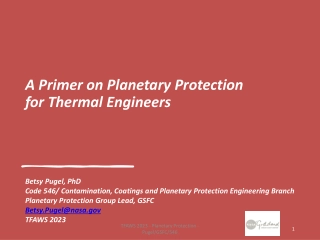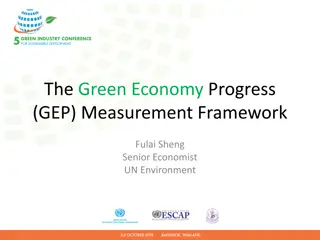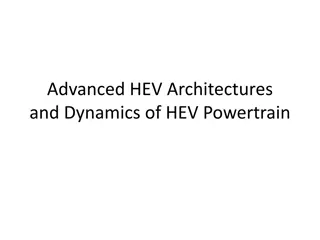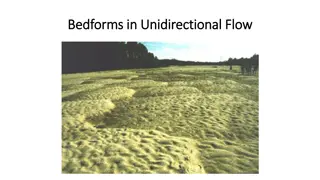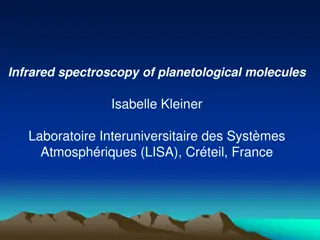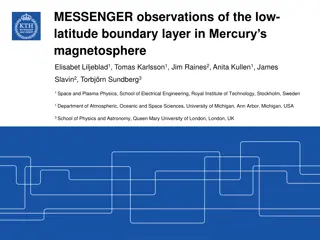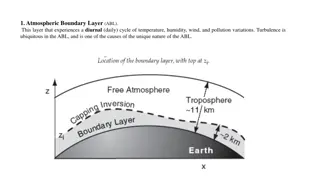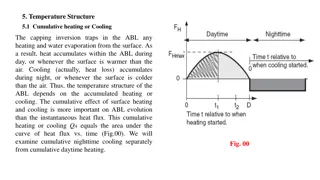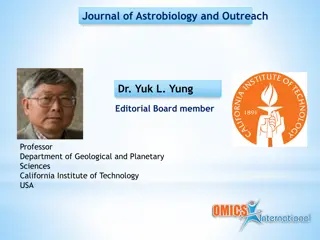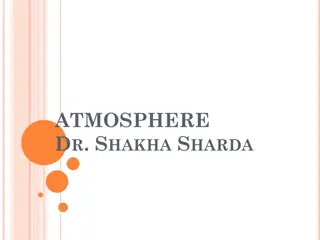Understanding the Planetary Boundary Layer in Atmospheric Science
The Planetary Boundary Layer (PBL) plays a crucial role in atmospheric dynamics, divided into surface, mixed, stable, and residual layers. During the day, the mixed layer experiences convective motions due to surface heating, while the stable layer dominates during the night. Understanding these layers is essential for studying atmospheric behavior.
Download Presentation

Please find below an Image/Link to download the presentation.
The content on the website is provided AS IS for your information and personal use only. It may not be sold, licensed, or shared on other websites without obtaining consent from the author. Download presentation by click this link. If you encounter any issues during the download, it is possible that the publisher has removed the file from their server.
E N D
Presentation Transcript
The planetary boundary layer (PBL), also known as the atmospheric boundary layer (ABL), is the lowest part of the atmosphere and its behavior is directly influenced by its contact with a planetary surface. Above the PBL is the "free atmosphere" where the wind is approximately geostrophic (parallel to the isobars) while within the PBL the wind is affected by surface drag. The free atmosphere is usually non-turbulent.
Structure of the Planetary Boundary Layer The PBL can be subdivided into four separate component layers: i. surface layer ii. mixed layer iii. stable layer iv. residual layer.
1. Mixed Layer(or) Convective Boundary Layer (CBL) During the daytime, surface heating leads to convective motion in the PBL. Heat transfer from the surface forms rising warm air. Radiative cooling from clouds forms sinking cooler air. Convective motion also leads to significant turbulence which mixes the air within this layer. Because of the convective motion and significant mixing of air, this sub-layer is called the convective layer or mixed layer. Above the mixed layer is a stable layer which prevents the continued upward motion of thermals. This stable layer also restricts turbulence, preventing frictional influences from reaching above the PBL. This stable layer is called the entrainment zone, because it is here where air from above the PBL entrains into the mixed layer.
During the day, the mixed layer reaches heights over 1 km and make up the entire layer of the PBL above the surface layer. However, the mixed layer vanishes with the sun as the thermally driven convection ceases.
2. Stable Layer(or) Nocturnal Boundary Layer (NBL) After sunset, convective motion dramatically decreases. However, the earth's surface still affects the air, and a stable boundary layer forms (also called the nocturnal boundary layer). This boundary layer is characterized by light winds and weaker, more sporadic turbulence than in the mixed layer. The height of the PBL, therefore, decreases significantly during the night. Though the height of the nocturnal layer varies, it is usually less than half that of the mixed layer Unlike, the mixed layer, the stable boundary layer does not have a well-defined top. Instead, it slowly merges with the residual layer.
3. Residual Layer As turbulence and the mixed layer decay with sunset, the air maintains many of the state variables that the well-mixed air had. This layer is called the residual layer (because its properties are residuals of the mixed layer) and forms above the stable boundary layer. While the nocturnal boundary layer has a very stable profile, the residual layer tends to have more of a neutral profile. The residual layer does not have contact with the earth's surface, and so is not influenced by turbulent stresses like the stable boundary layer below it. The residual layer is bounded above by a capping inversion, which approximates the height of the daytime height of the mixed layer. This inversion simply prevents entrainment from aloft.
Because the residual layer is not influenced directly by the earth's surface (i.e. no turbulent stresses) it is not considered a boundary layer. However, we include it in our discussion for descriptive purposes. Only the mixed layer and stable layer are true boundary layers
4. Mixing Height (or) Gradient Height (or) Height of the PBL Because turbulent fluxes vary based on surface heating and other factors, the height of the PBL also varies. At night, the height of the PBL decreases dramatically as the stable layer forms. The height of the PBL is called the mixing height, because it is the height up to which the air is well-mixed. The mixing height is very important to air quality experts when determining air pollution dispersion. We will cover this more in the Focus on Air Quality section. Meanwhile, we'll look at some of the factors which influence the PBL.
For winds near ground surface, frictional effects play a significant role. Ground obstruction retard the movement of air close to the ground surface, causing a reduction in wind speed. At some height above ground, the movement of air is no longer affected by ground obstruction. This height is called gradient height (ZG) which is a function of ground roughness. The unobstructed wind speed is called gradient wind speed (VZg) and it is considered to be constant above gradient height.
Wind Profile Wind profile is the variation of mean wind speed with height above ground. It is usually represented by power law or logarithmic law. 1. Power law The Power law, which is used by some engineers to represent variation of wind speed with height, is an empirical equation, which for the case of mean speeds takes the form of ?? ???= ? ?? Where, Vz, Vzg = the wind speeds at height Z, Zg respectively, and = the power law exponent. (Zg and are functions of ground roughness)
2. Logarithmic law The Logarithmic law is used by both engineers and meteorologists. It is based on physics of the boundary layer and it is valid in the bottom 20 to 30% of the boundary layer. Mean wind speed ?? =2.5 ? log ? ?0 Where, ?0= Roughness length ?0 ? U*= Friction velocity = ?0= Shear stress at the ground surface = Air density
Typical values of parameters in wind profiles based on effect of terrain type Terrain category Terrain description Gradient height Zg (m) Roughness length Zo (m) Mean speed exponent 1 Open sea, ice, tundra, desert 250 0.001 0.11 2 Open country with low scrub or scattered trees 300 0.03 0.15 3 Suburban areas, small towns, well wooded areas 400 0.3 0.25 4 Numerous tall buildings. City centers, well developed industrial areas 500 3 0.36
Figure: Variation of wind speed with height for different terrain types
The turbulence created is higher in rougher terrain than in smoother terrain. Turbulence decreases with increasing height above ground. Turbulence Intensity The most commonly used parameter to define turbulence in time domain is turbulence intensity. It is a measure of the relative amplitude of the fluctuations compared to the mean component of wind. It is expressed as: ?? = ? ?? Where, Tu = The turbulence intensity. = The root mean square of wind speed, and VZ= The mean wind speed. Turbulence intensity decreases with height since the mean wind speed increases and the fluctuation of wind decreases.
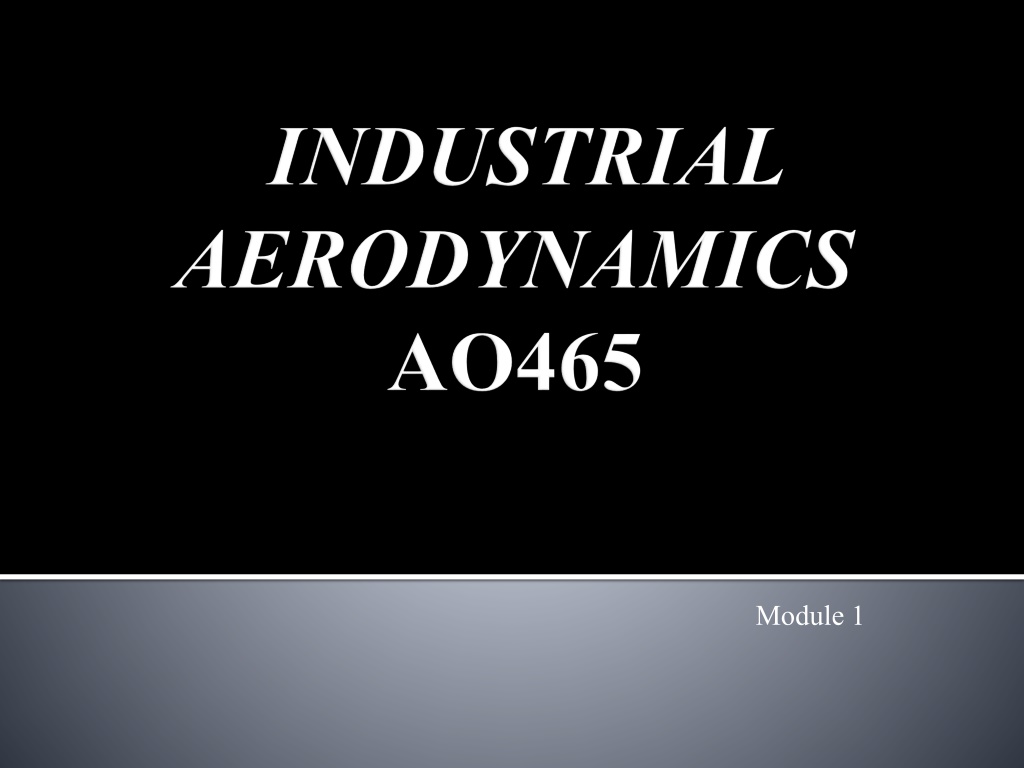

![❤[PDF]⚡ Planetary Ring Systems (Springer Praxis Books)](/thumb/21506/pdf-planetary-ring-systems-springer-praxis-books.jpg)
